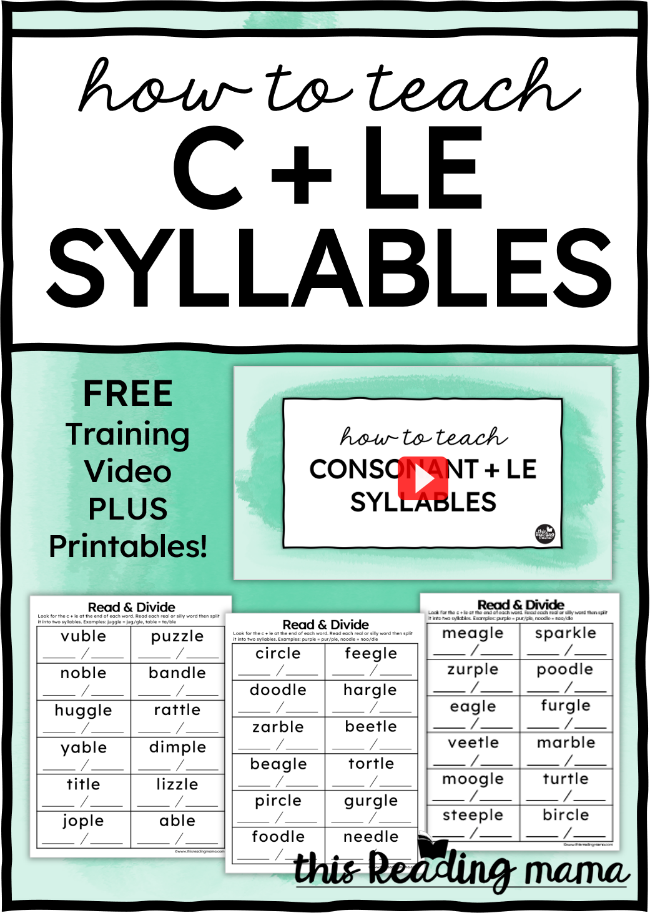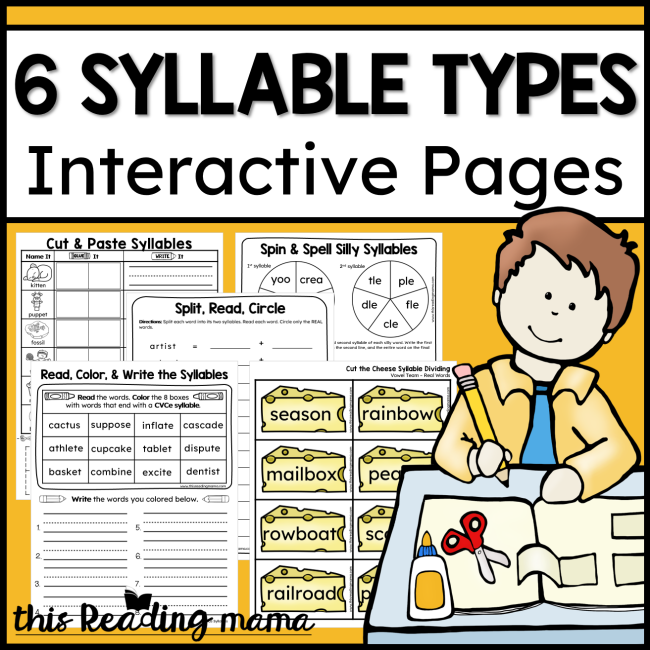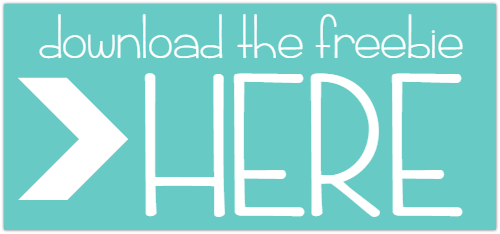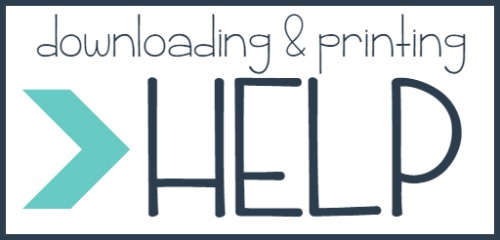Are your learners ready for you to teach final stable syllables {sometimes called c + le syllables}? Maybe you teach struggling learners or you just don’t know where to start. Watch this video and grab the freebie to help your learners be successful in decoding longer words with final stable syllables.
Find all the freebies and videos in our series, Tips for Teaching Syllable Types.

*Scroll down to the bottom of this post to find the teal download button for the freebie.
**This post contains affiliate links.
What are Final Stable Syllables?
Final stable syllables are words that end with an unaccented consonant + l + e. For example, juggle has a final stable syllable because it has a g followed by le. B
Besides vowel team syllables, this has been one of the trickiest syllable types for many of the struggling readers I’ve taught over the years.
It’s important that we teach breaking apart words into syllables in an explicit way, breaking down the process of decoding so all our readers can be successful. That’s what you’ll find in this video, How to Teach Final Stable Syllables. I encourage you to…
1. Watch the Video to Learn:
- How to build your instruction off what your learners already know
- A step-by-step process* learners can use to help them break apart and successfully read words with final stable syllables.
*The steps share in this video come from the things I learned while getting my grad certificate in Dyslexia and LBLD and two curricula based on Orton-Gillingham- Wilson Reading and All About Reading.
2. Snag the Freebies:
Snag the FREE Final Stable Syllable Read & Divide printables at the very end of this post. They’ll give your learners a NO PREP way to practice reading real and nonsense C + LE Syllables in words.
Scroll below and click the teal button to grab your freebie! Then make sure to hop over and grab our 6 Syllable Types Interactive Pages for even more syllable learning!
Enjoy teaching syllables!
~Becky



Thank you so much!!! I am a resource teacher and really appreciate your materials.
Awesome. Thank you for what you do to make a difference in kids’ lives!
Thank you.
You’re welcome!
I absolutely LOVE your materials. I use them all the time when working with struggling readers and they work. THANK YOU!
I’m so glad to hear that things are clicking with your students. What a blessing! 🙂
Why “E” is not a long vowel in BREATH ?
Some vowel teams make more than one sound. That’s why, “When two vowels go walking, the first one does the talking,” isn’t as helpful as you might think. EA makes three sounds. The most common is long e. The second most common is short e, as in the word “breath”, and the third and least common is long, as in the word “great.” You can find more about teaching vowel teams like EA here -> https://thisreadingmama.com/phonics-patterns-multiple-sounds-chart/